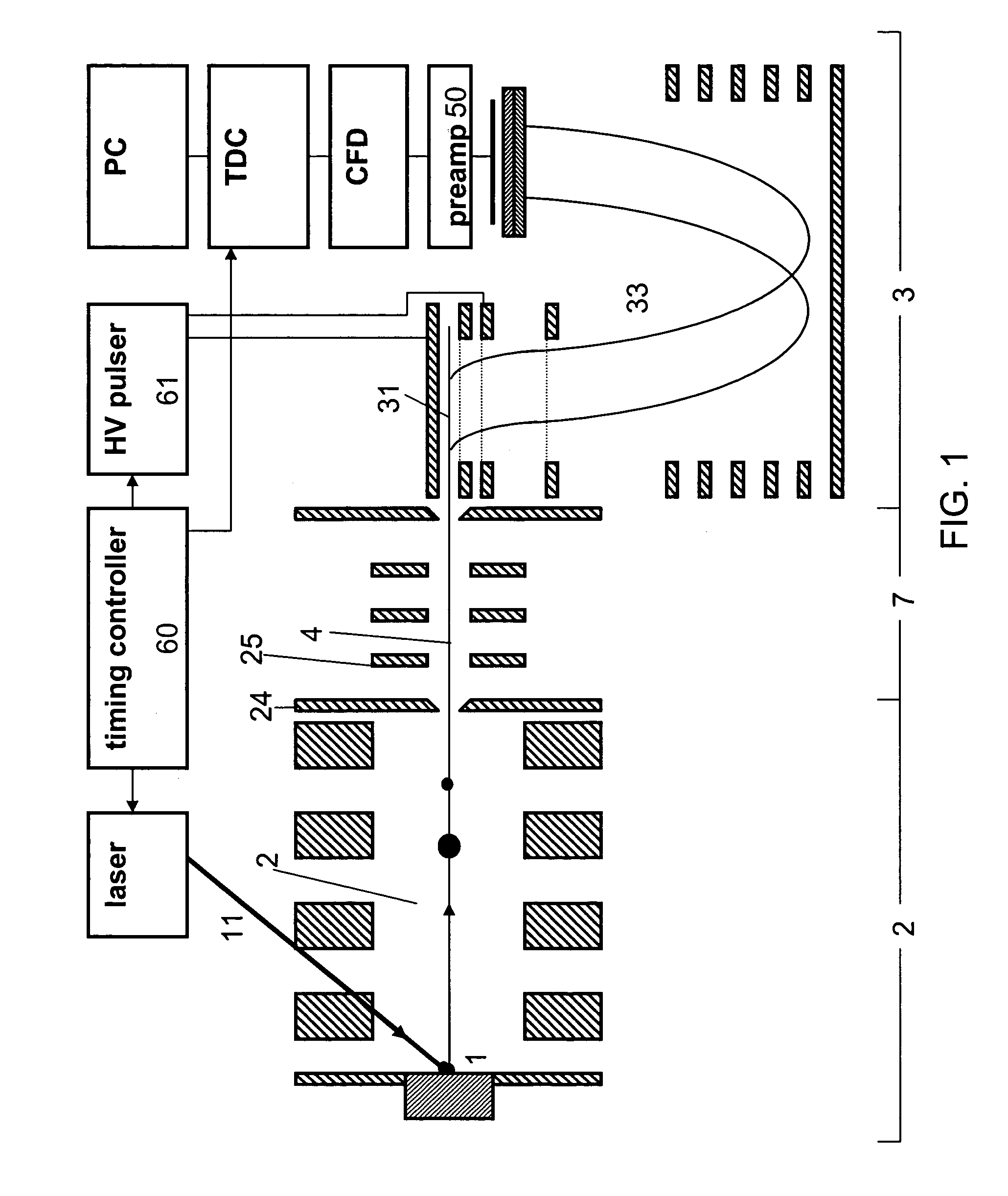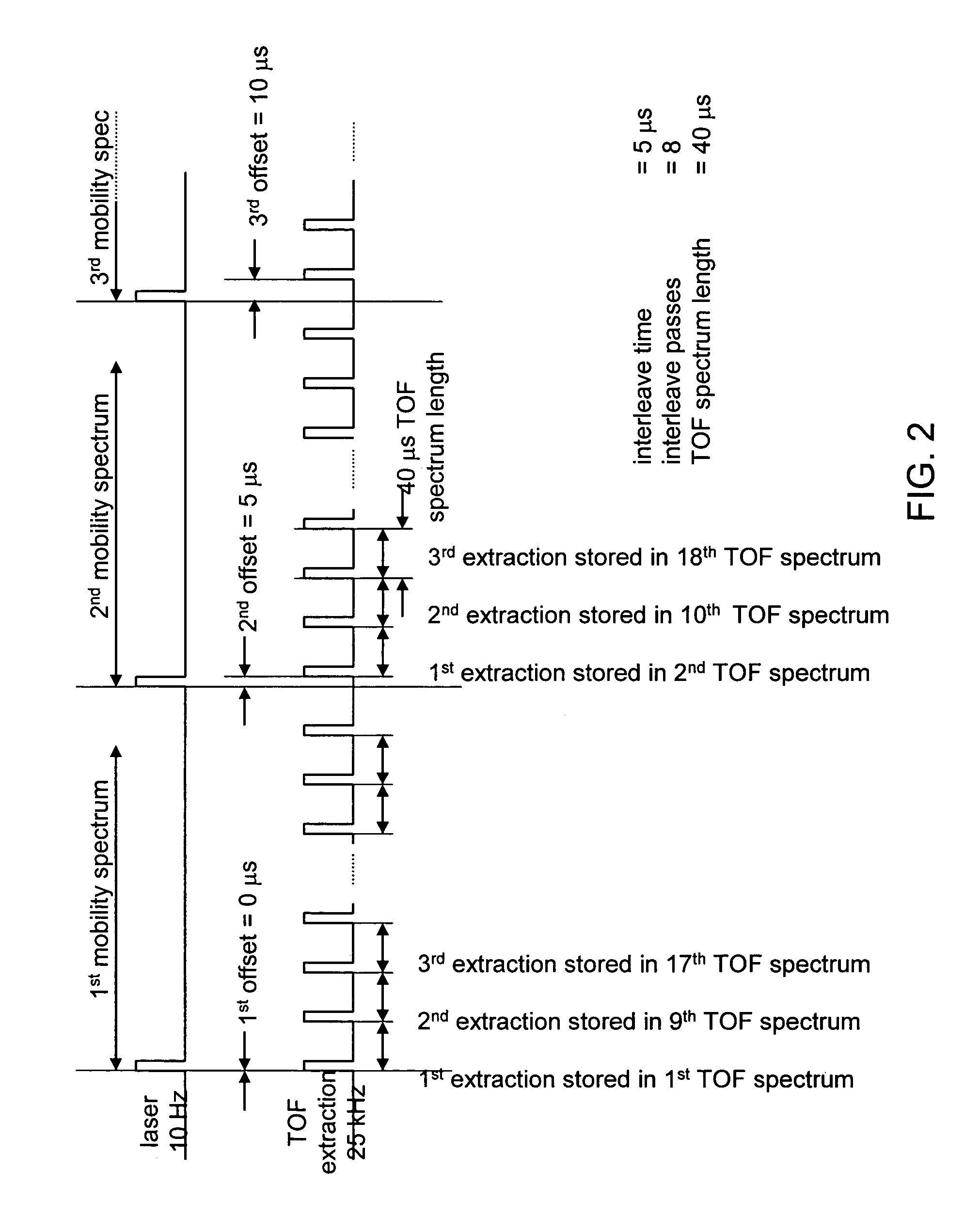Time-of-flight mass spectrometer for monitoring of fast processes
a mass spectrometer and process technology, applied in mass spectrometers, particle separator tube details, separation processes, etc., can solve problems such as power loss
- Summary
- Abstract
- Description
- Claims
- Application Information
AI Technical Summary
Benefits of technology
Problems solved by technology
Method used
Image
Examples
Embodiment Construction
[0032]The following discussion contains illustration and examples of preferred embodiments for practicing the present invention. However, they are not limiting examples. Other examples and methods are possible in practicing the present invention.
[0033]As used herein the specification, “a” or “an” may mean one or more, unless expressly limited to one. As used herein in the claim(s), when used in conjunction with the word “comprising”, the words “a” or “an” may mean one or more than one. For example, where an instrument component or method step is called for, it should be taken to include more than one of the same component or method step. As used herein “another” may mean at least a second or more.
[0034]The following discussion contains illustration and examples of preferred embodiments for practicing the present invention. However, they are not limiting examples. Other examples and methods are possible in practicing the present invention.
[0035]As defined herein, “interleaved timing ...
PUM
 Login to View More
Login to View More Abstract
Description
Claims
Application Information
 Login to View More
Login to View More - R&D
- Intellectual Property
- Life Sciences
- Materials
- Tech Scout
- Unparalleled Data Quality
- Higher Quality Content
- 60% Fewer Hallucinations
Browse by: Latest US Patents, China's latest patents, Technical Efficacy Thesaurus, Application Domain, Technology Topic, Popular Technical Reports.
© 2025 PatSnap. All rights reserved.Legal|Privacy policy|Modern Slavery Act Transparency Statement|Sitemap|About US| Contact US: help@patsnap.com



